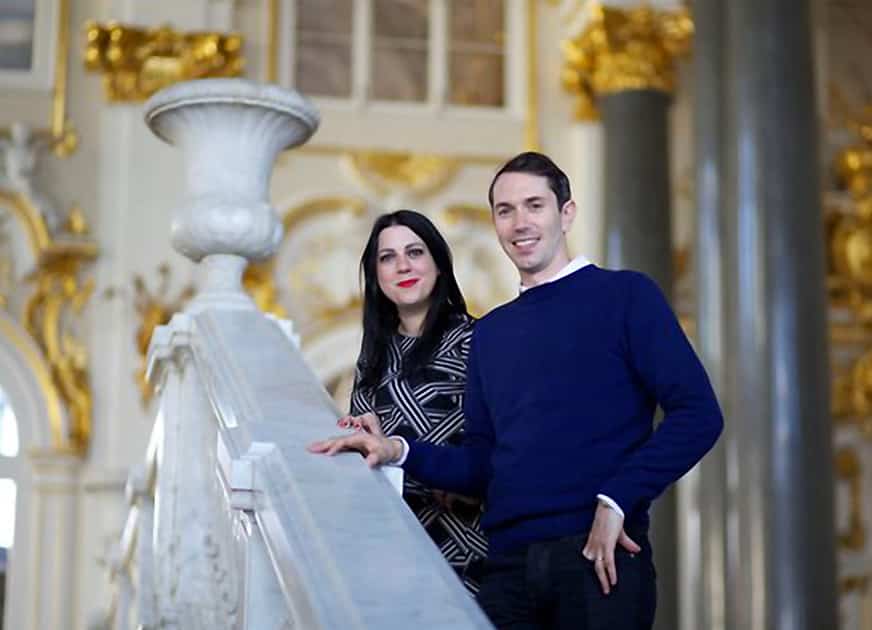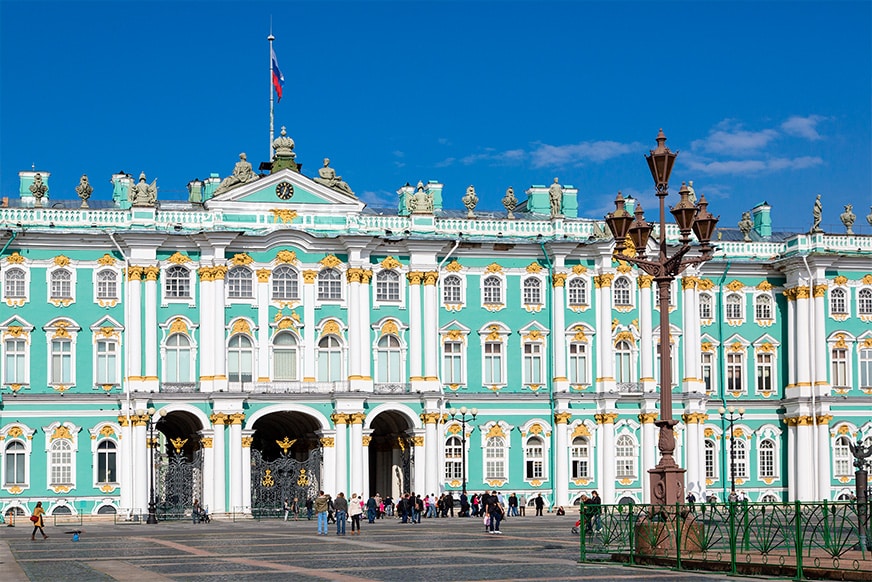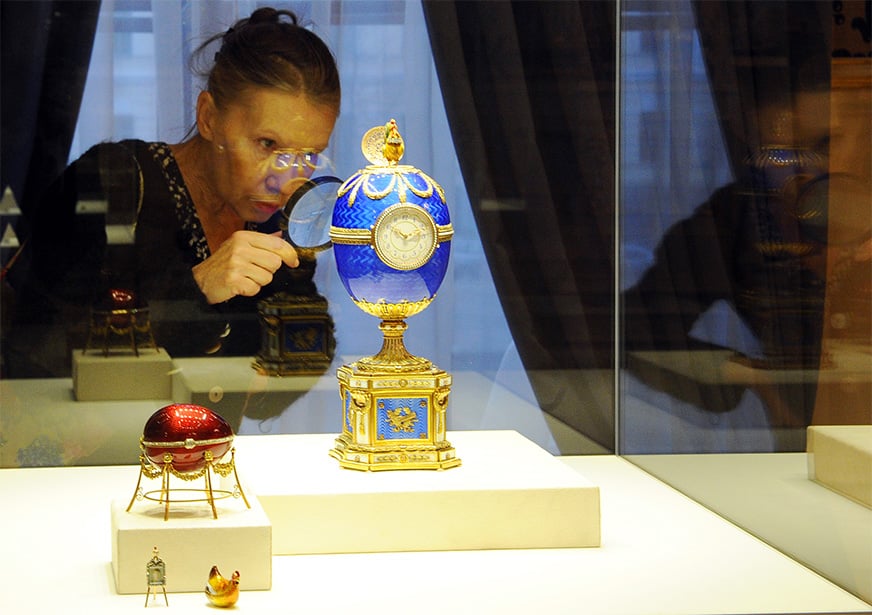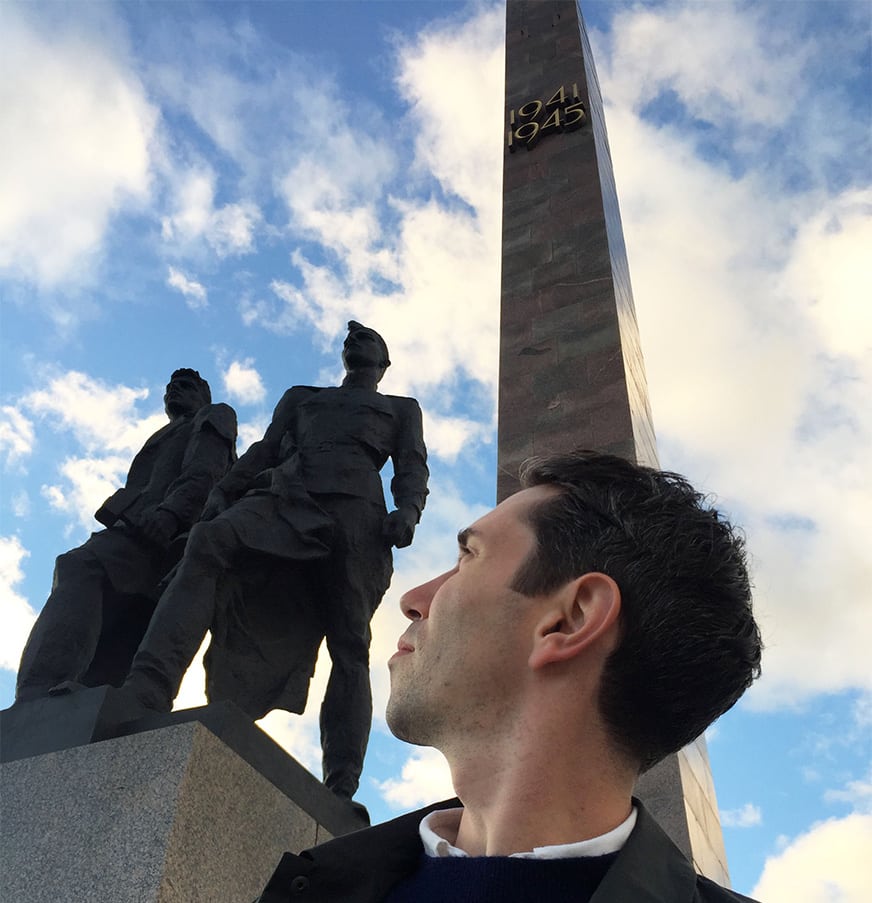
Is it possible to tell the history of a city by focusing only on its culture? This was the challenge that my co-presenter, the art historian Janina Ramirez, and I gave ourselves while making An Art Lovers’ Guide to various European cities.
What isn’t possible is to avoid culture in Russia’s old imperial capital. Saint Petersburg is an almost unimaginably splendid city in which art and architecture served as propaganda for royal power under Russia’s tsars. It survived the October Revolution of 1917 and the brutal siege during the Second World War and remains a beautiful, thrilling and awe-inspiring place.
To get an overview of Russia’s second-largest city, which is often called “the Venice of the North”, meander by boat along its many waterways and canals. These were constructed at the behest of Peter the Great, who founded the city in 1703. As well as taking in extraordinary landmarks, such as the onion-domed Church of Our Saviour on Spilled Blood, a boat tour also offers a chance to reflect on the city’s origins, while looping around the Peter and Paul Fortress (Saint Petersburg’s original citadel) on the River Neva.
A trip to the State Hermitage Museum is a must. They say it would take 11 years to look properly at every one of the more than three million items in its collection, but don’t be put off. Founded in 1754 by Catherine the Great, who hoovered up some of Europe’s most prestigious art collections, including that of former British prime minister Robert Walpole, the Hermitage occupies six buildings beside the River Neva, including the spectacular 1,500-room Winter Palace, home to Russian tsars for almost two centuries.

Its Jordan Staircase (see main picture above), a fantastical flurry of gilt imperial magnificence, offers a glimpse of the opulence of the Russian court – before Bolsheviks stormed the palace during the Revolution of 1917.
There are masterpieces here to suit every taste, from the ancient marble Venus Tauride to Rembrandt’s moving painting Return of the Prodigal Son. But I always make a beeline for the Hermitage’s extraordinary holdings of Matisse. These include his vast, powerful, almost barbaric panels Dance and Music, commissioned in 1910 by a Russian collector.
The Hermitage isn’t the only place in Saint Petersburg where you will encounter great art. It’s worth seeking out the bronze equestrian statue of Peter the Great in Senate Square, if only to marvel at the 1,250-tonne granite monolithic boulder, known as the Thunder Stone, which provides a pedestal. Discovered a few miles inland from the Gulf of Finland, it’s the largest stone ever moved by humans.
Assuming you aren’t suffering museum fatigue after the Hermitage, consider visiting the State Russian Museum, where you’ll find many great examples of 20th-century avant-garde Russian art, including more than 100 paintings by Suprematist master Kazimir Malevich, and Vladimir Tatlin’s extraordinary, category-defying Corner Counter-Relief, made from iron, copper, wood, and strings.
Saint Petersburg is a city of palaces, with one on almost every corner. A fine neoclassical example, the Shuvalov Palace, is home today to the Fabergé Museum, which contains nine of the jewelled eggs created under the supervision of the Russian jeweller, Peter Carl Fabergé.

Originally commissioned as Easter gifts by the last two Russian tsars, the museum includes the first one ever made – the First Hen egg. Made of gold and then covered in white enamel to look like a real egg, it is surprisingly minimalist.
The city also boasts an impressive, thriving contemporary art scene – epitomised by the ongoing development of New Holland Island, an artificial, 19-acre islet, situated a 20-minute walk east along the River Neva from the Hermitage. Constructed during the 18th century, the island is now a vibrant cultural district, funded by billionaire businessman Roman Abramovich and his wife Dasha Zhukova. Last summer, the island’s renovated central green lawn was officially launched, providing the city with a much-needed park, embellished with outdoor sculptures and temporary pavilions for exhibitions.
An hour from the city centre, it’s worth travelling see the Monument to the Heroic Defenders of Leningrad, which commemorates the resistance of the city’s citizens against the Nazis’ terrible siege of the city that lasted almost 900 days.

Unveiled in 1975, it’s dominated by a 48m-high obelisk, at its base, a circular enclosure, in which a massive and forbidding steel ring – broken, at one point, to represent the lifting of the siege – summons a sombre and affecting atmosphere.
Saint Petersburg is synonymous with ballet. Unfortunately, while we were filming, the famous Mariinsky Ballet company was not performing. But we did catch a production of Swan Lake, by another company, on the small but celebrated stage of the Hermitage Theatre, built during the 1780s for Catherine the Great. It was a fairy-tale ending to our trip – one worthy of a city that, in so many ways, feels like a fantastical setting for a fairy tale itself.
An Art Lovers’ Guide is on Monday 15 May on BBC4 at 9pm
Comments
Add comment